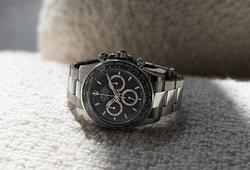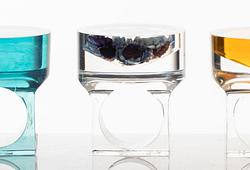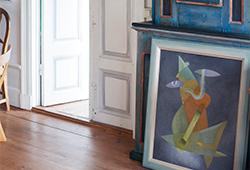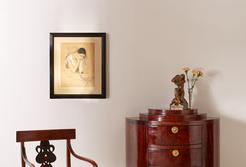Stig Lindberg
Stig Lindberg & David Rosén, coffee table, "Waves" from the Nordiska Kompaniet "Futura" series. 1954.
Frame of oak with a top of enamel. Length 125, width 54, height 48 cm.
Kulumaa. Jälkiä.
Muut tiedot
While working with bathtub enamels, Stig Lindberg happened to see a colour sample, a piece of metal that had gone in and out of the oven. It struck him that one could work purely artistically with the material. In 1949, he created his first enamel painting on steel plate. At the Triennale in Milan in 1951, Stig Lindberg presented modern enamel painting in an international context for the first time. Thereafter, he collaborated with NK's furniture workshop in Nyköping to produce tables with enamel tops. The enamel offered a colour palette of up to seven thousand shades after firing in the oven for 5-6 minutes. Several artists used the technique, including Egon Möller-Nielsen, Algot Törneman, and Endre Nemes. The table bases were available in several different designs. They were often dated underneath along with NK's stamp.
Suunnittelijat
During the 1950s and 1960s, Stig Lindberg created many of his most sought-after stoneware objects, decorative vases, bowls, and dishes with pressed or carved decoration, and popular ceramic series such as Pungo, Domino, Terma, Karneval, were introduced. A few years later, he became artistic director after Wilhelm Kåge. Stig Lindberg designed popular tableware, several of which are still manufactured today, such as Adam, Eva, Berså, Spisa Ribb (now called Ribb), Prunus, and Aster. During his career, Lindberg worked as an industrial designer, book illustrator, textile and glass designer.
Lue lisää



















































